Assume there are three processes: Pa, Pb, and Pc. Only Pa can output the letter A, Pb B, and Pc C. Utilizing only semaphores (and no other variables) the processes are synchronized so that the output satisfies the following conditions
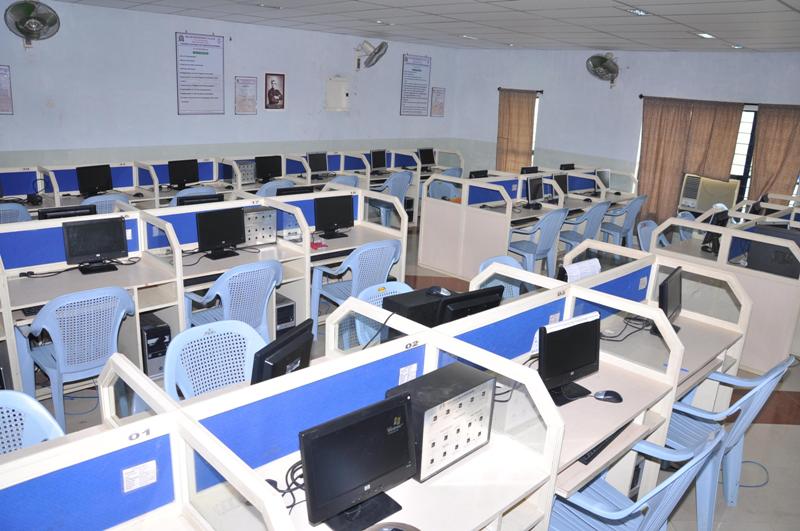
To impart teaching & training in various areas of Computer Science and Engineering based on
Post Graduate course of Computer Science and Engineering was established in the year 2005 with 18 students as intake. The alacrity of the students to learn makes it easier for the Department of Computer Science and Engineering to produce top-notch engineers who are being recruited by companies all over the world.
The Department is proud to produce more number of Anna University rank holders every year. CSE Department is equipped with excellent teaching faculties, including high quality computer laboratory with state of the art equipment to support the learning process. The Department of Computer Science and Engineering strives to for qualified engineers to create a sustainable world and enhance the global quality of life.


Our vision is to offer up to date and flexible programs which will allow our graduates to be competitive in the job market. We strive to provide a hands-on approach in teaching computer related courses. To this end we are increasing the capacity of our computer laboratories as well as equipping them with the latest in hardware and software.

M1 (Research with Latest Tools): To provides exposure to the students in the latest tools and technologies in the area of computer hardware and software, and to enable them perform research in all branches of the computing field
M2( Industrial Environment & Quality Education): Our main task is to prepare students for careers in industry or to pursue advanced graduate studies with an excellent knowledge in all computer related fields
M3 (Human Potential): To develop human potential to its fullest extent so that intellectually capable and optimistic leaders can emerge in range of professions
To provide autonomous and involved learning thereby identifying their inimitable talent and cultivate it, according to their requirements to pursue higher education.
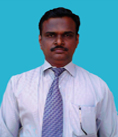
HOD for MECH
“To be a centre of excellence in the field of Mechanical Engineering where the best of teaching, learning and research synergize”
Welcome to the Department of Mechanical Engineering at Mailam Engineering College, the esteemed & the fastest growing college in Tamilnadu. As Chair of the Department, I take pride in the fact that our department has well qualified faculty and staff members who are available to the students fulltime. A well equipped state of the art laboratory helps the students to keep in pace with the racing technology.
The faculty members in addition to regular teaching are also busy in consultancy services to local industry and Govt. departments, organizing and participating national/international conferences, workshops and seminars, upgradation of laboratories (through college budget and grants from AICTE and other bodies).
The students of Mechanical Engineering have been recruited by renowned companies like Cooper busman, Sundram fasteners Ltd, TCS, Wipro, HCL etc. They have also brought laurels to the department by winning various competitions at national level co-curricular and extracurricular activities like paper presentations, projects, quizzes, sports etc.
Create, select, and apply appropriate techniques, resources, and modern engineering and IT tools including prediction and modeling to mechanical engineering activities with an understanding of the limitations.
Apply reasoning informed by the contextual knowledge to assess societal, health, safety, legal and cultural issues and the consequent responsibilities relevant to mechanical engineering practice.
Understand the impact of the mechanical engineering solutions in societal and environmental contexts, and demonstrate the knowledge and need for sustainable development.
Apply ethical principles and commit to professional ethics and responsibilities and norms of the mechanical engineering practice.
Function affectively as an individual, and as a member or leader in diverse teams, and in multidisciplinary settings in mechanical engineering.
engineering activities with the engineering committee and with society at large, such as, being able to comprehend and write affective reports and design documentation, make effective presentations in mechanical engineering.
Recognize the need for, and the preparation and ability to engage in independent research and lifelong learning in the broadest contest of technological changes in mechanical engineering.
Develop proficiency as a computer science engineer with an ability to solve a wide range of computational problems and have sustainable development in industry or any other work environment.
Analyze and adapt quickly tone environments and technologies, gather new information, and work on emerging technologies to solve multidisciplinary engineering problems.
Possess the ability to think analytically and logically to understand technical problems with computational systems fora lifelong learning which leads top dressing search.
Adopt ethical practices to collaborate with team members and team leaders to build technology with cutting-edge technical solutions for computing systems
Strongly focus on-design thinking and critical analysis to create innovative products and become entrepreneurs.
The Department of Mechanical Engineering takes a great pride in turning out successful technocrats who can tender their best service with boundless competence and untiring dynamism. The Department is proud to produce Anna University rank holders every year. Anna University verification committee has awarded third rank to the Department for the best infrastructure facilities available among 225 self-financing colleges for the year 2008. The faculty members and students are regularly engaged in presenting and publishing papers in National and International Journals and Conferences. Research works are being carried out in Thermal Engineering laboratory on ‘Utilization of Plastic Fuel in IC engines’ and ‘Pollution Control in Automobiles’. Also, consultancy works are being carried out in Strength of Materials Laboratory to the industries situated nearby the Institution. The Department regularly applies and receives fund from AICTE, DST and CSIR for projects and seminars. The mission of the Department is to promote academic excellence, widen intellectual horizon and inculcate high ideals for the overall personality development of the students and thereby enhance the image of Mechanical Engineers in the Society. Guest lectures and industrial visits are arranged regularly to students for up-gradation of knowledge on latest technologies available in the market on the thrust areas like Manufacturing, Design, Thermal, CAD, CAM, CIM, etc. The students are encouraged for all round excellence in all non-scholastic activities.
The Department of Mechanical Engineering offers a Post Graduate course on M.E (Engineering Design). The PG Program was started in the year 2004 with team of highly qualified, dedicated and motivated faculty members as well as with well equipped laboratories. The Department is privileged to produce a Gold Medal list in ME (Engineering Design) during the year 2012. The field of Engineering Design encompasses many exciting subjects such as Robotics, Finite Element Analysis, Advance Mechanism Design, Product Optimization, Integrated Manufacturing System, and Mechanical Vibration.
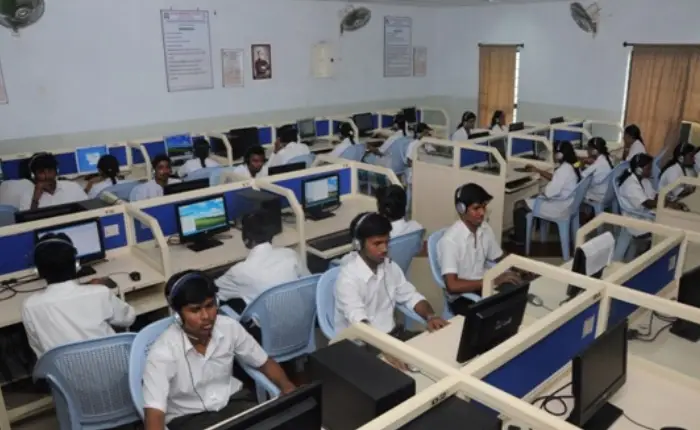
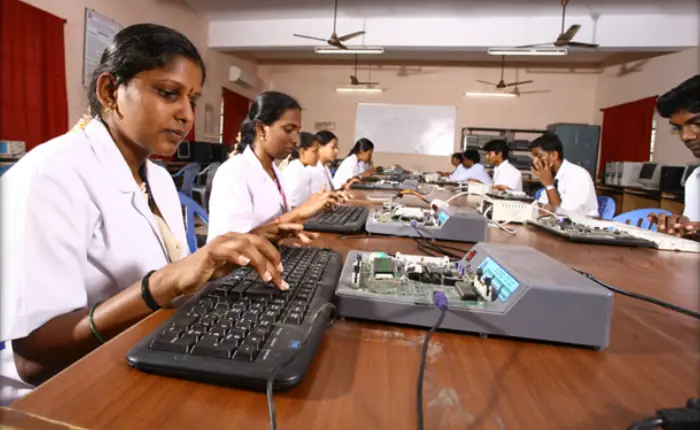
Assume there are three processes: Pa, Pb, and Pc. Only Pa can output the letter A, Pb B, and Pc C. Utilizing only semaphores (and no other variables) the processes are synchronized so that the output satisfies the following conditions
Assume there are three processes: Pa, Pb, and Pc. Only Pa can output the letter A, Pb B, and Pc C. Utilizing only semaphores (and no other variables) the processes are synchronized so that the output satisfies the following conditions
Consider a simulation with three smoker threads and one agent thread. Each smoker continuously makes a cigarette and smokes it. But to make a cigarette, a smoker needs three ingredients: tobacco, paper, and matches. One of the smoker threads has only paper, another has only tobacco, and the third has only matches. The agent thread has an infinite supply of all three materials. The three smoker threads are initially blocked. The agent places two randomly chosen (different) ingredients on the table and unblocks the one smoker who has the remaining ingredient. The agent then blocks. The unblocked smoker removes the two ingredients from the table, makes a cigarette, and smokes it for a random amount of time, unblocking the agent on completion of smoking the cigarette. The agent then puts out another random two of the three ingredients, and the cycle repeats
Write a multi-class multithreaded Java program that uses a monitor to synchronize the agent thread and the three smoker threads. Do not mechanically translate semaphore code into monitor code! The agent thread executes in an agent object created from an agent class. Each smoker thread executes in a smoker object. All smoker objects are created from one smoker class whose constructor is used to specify the ingredient possessed by the smoker object. A driver class with a main method constructs the objects and starts the threads.
Use a single monitor object instantiated from a class Control for synchronization. Each of the four threads invokes a synchronized monitor method for its synchronization. No semaphores are allowed. No synchronized blocks are allowed, only synchronized methods. No busy waiting is allowed. No calls to nap inside a synchronized method are allowed (do not nap while holding the monitor object’s lock, that is, while inside a synchronized method or while inside a method called by a synchronized method)
Write a multi-class multithreaded Java program that simulates multiple sleeping barbers, all in one barbershop that has a finite number of chairs in the waiting room. Each customer is instantiated from a single Customer class, each barber is instantiated from a single Barber class.
Establish a Lab setup for the following network operating systems based programs based on the skills in networking on your own. E.g. for identifying networking hardware, identifying different kinds of network cabling and network interface cards can be done.
A real-time program implementing an alarm clock shall be developed. [Alarm clock, using C and Simple_OS]
Clock with alarm functionality shall be implemented, It shall be possible to set the time, It shall be possible to set the alarm time, the alarm shall be enabled when the alarm time is set, the alarm shall be activated when the alarm is enabled, and when the current time is equal to the alarm time, an activated alarm must be acknowledged. Acknowledgement of an alarm shall lead to the alarm being disabled, the alarm is enabled again when a new alarm time is set, an alarm which is not acknowledged shall be repeated every 10 seconds. The program shall communicate with a graphical user interface, where the current time shall be displayed, and where the alarm time shall be displayed when the alarm is enabled. It shall be possible to terminate the program, using a command which is sent from the graphical user interface.
Exercises Assume any application(e.g.banking) on your own and do the following exercises
Exercises Assume any application(e.g.banking) on your own and do the following exercises
Design a RMI Lottery application. Each time you run the client program — “java LotteryClient n”, the server program “LotteryServer” will generate n set of Lottery numbers. Here n is a positive integer, representing the money you will spend on Lottery in sterling pounds. Write this program in a proper engineering manner, i.e. there should be specifications, design (flow chart, FD, or pseudo code), coding, test/debug, and documentation.
Consider a distributed system that consists of two processes which communicate with each other. Let P be a state predicate on the local state of one process and Q be a state predicate on the local state of the other process. Assume that neither P nor Q are stable (i.e. closed). Design a superimposed computation which detects that there exists an interleaving of underlying events in this system where at some state P ^Q holds. (A superposed computation is one that does not a_ect the underlying system; it may
ead” but not write” the state of the underlying system. Events in a superposed computation may occur in at the same instant as the underlying events and/or at di_erent instants.) State any assumptions you make. [Hint: Use vector clocks.]
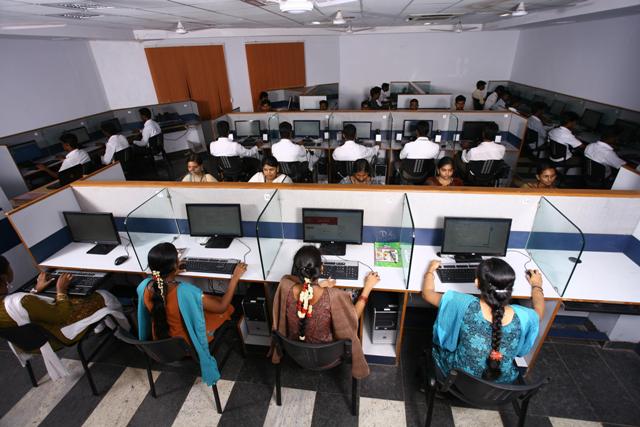
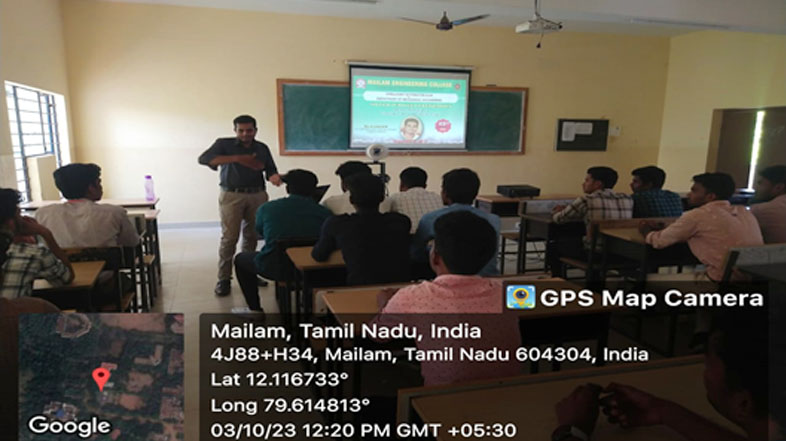
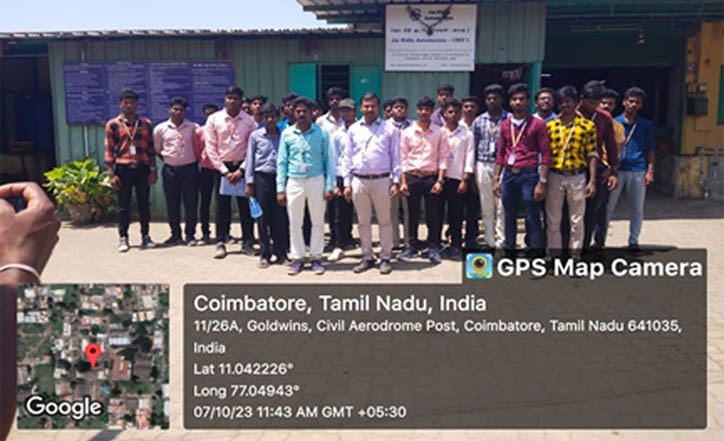
The Dr. S. Senthil, Principal, MEC honouring Dr.A.Gnanamoorthy, Assistant Professor, University College of Engineering Villupuram during the Internal Symposium
The Department of Mechanical Engineering organized a one-day Internal Symposium on 17 Mar 2016. The program was inaugurated by Dr.A.Gnanamoorthy, Assistant Professor, University College of Engineering (Villupuram campus). He delivered the inaugural address as well.
Research & Development
Our college management has sanctioned Rs.20,OOO for the R&D Division of Mechanical Engineering to teach automation for II Yr Mechanical Engineering students. This money is spent on procuring equipment such as PIR, Bluetooth, ultrasound sensor, Andeno Board, Breed Board, Bosh K.
Guest Lectures
Mr.Suseel Jai Krishnan, Asst. Prof., SA Engineering College, Chennai, gave a guest lecture on “Thermal Engineering” for II Yr students on 12 Apr 2016.
Mr.M.Subaramanian, Asso. Prof., Aditya Institute of Technology, Coimbatore gave a guest lecture on “Design of Transmission System” for III Yr students on 11 Apr 2016.
Dr.S.Suresh Kumar, Asso. Prof., SSN College of Engineering, Chennai, gave a guest lecture on “Finite ElementAnalysis” for III Yr students on 12 Apr 2016.
Staff Activities
Dr.R.Rajappan, Dean and HOD, published a paper titled “Mechanical Design and Development of Agricultural Robot’ in “Intemational Journal of Advancements in Mechanical and Aeronautical Engineering” Volume 2: Issue 1 -2015 (pg 94-97) : 23724153]
Dr.R. Rajappan, Dean and HOD, published a paper titled “Buckling Analysis in Uni Directional Glass Epoxy Laminated Plate” in “Journal of Chemical and Pharmaceutical Sciences” (special edition pg 247-255) [ISSN: 0974-2115]-2015
Dr.R. Rajappan, Dean and HOD, published a paper titled “Testing and Analysis of Kenaf Fibre Reinforced Polymer’ in “Joumal of Chemical and Pharmaceutical Sciences” Special Issue (pg.270-274) [ISSN: 09742115]-2015
Dr-R. Rajappan, Dean and HOD, published a paper titled “Performance and Emission Characteristics of Vaiable Compression ratio Direct Injection Diesel Engine using Tamanu oil” in “Journal of Chemical and Pharmaceutical Sciences” Special Issue 7: 2015 (pg 40-43) [ISSN: 0974-]
Dr.R. Rajappan, Dean and HOD, published a paper titled “Performance and Emission Characteristics of Variable Compression ratio Direct Injection Diesel Engine using Plastics oil” in “Journal of Chemical and Pharmaceutical Sciences” Special Issue 7: 2015 (pg 4447) [ISSN: 0974-
Dr-R. Rajappan, Dean and HOD, published a paper titled “Ionic liquids: A Green Solvent for the Biosynthesis of MgO Nano particles Using Banana Stem Plant Extract” in “Journal of Nano Engineering and Non Manufacturing” (Vol. 5, pp. 1 7, 2015) [ISSN: 2157-9326]
Mr.P.Saravanan, Asso. Prof., presented a paper titled “Performance Emission and Combustion Characteristics of Single Cylinder 4-Stroke LHR Engine using Plastic oil” in the 3″ International Conference on “Engineering Technology and Science” held at Muthayammal Engineering College, Rasipuram, during 18 – 19 Mar 2016.



| S.No | Faculty name | Paper title | Identified journal | Paper link |
|---|---|---|---|---|
| 1 | Dr.T.Priyaradika Devi | Cloud Based Secure Travel Identity Citizen Data Mining System | IJMA(Web of Science) ISSN 0038-111X | Accepted & Paid |
| An Efficient And Privacy Preserving Cloud Computing Biometric Identification Scheme | Elsevier ISSN: 2214-7853 | Accepted & Paid | ||
| 2 | S.Prasanna | Decentralized Cloud Security by Using Block chain Innovative Method | Journal Of Critical Review(Scopus) Issn:2394-5125 | https://www.jcreview.com/?mno=103866 |
| Self-Destruction Of Data In Cloud Using Asymmetric Key With Key Generator | Elsevier ISSN: 2214-7853 | https://www.sciencedirect.com/science/article/pii/S2214785320365378 | ||
| 3 | V.Mathavan | Android Application For Spontaneous Soil Constant Monitoring And Controlling System Using Raspberry Pi | Journal Of Critical Review(Scopus) Issn:2394-5125 | https://www.sciencedirect.com/science/article/pii/S2214785320365330 |
| War Field Soldier Body Condition Monitoring system | Elsevier ISSN: 2214-7853 Elsevier ISSN: 2214-7853 | http://www.jcreview.com/?mno=103844 | ||
| 4 | S.Thulasidass | Hash Algorithm For Secure Data Transmission Using Qr Code In Cloud Computing | Journal Of Critical Review(Scopus) Issn:2394-5125 | http://www.jcreview.com/?mno=103858 |
| Liver Tumor Diagnosis By Using Image Processing Techniques | Elsevier ISSN: 2214-7853 Elsevier ISSN: 2214-7853 | https://www.sciencedirect.com/science/article/pii/S2214785320365421 | ||
| 5 | S.Vanakovarayan | J48, Cart And Navie Bayesian Algorithm For Performance Analysis Of Software Quality Prediction | Journal Of Critical Review(Scopus) Issn:2394-5125 | http://www.jcreview.com/?mno=103845 |
| Classification Using Fundus Image Of Eye By Cnn Method And Self- Sufficient Glaucoma Detection | Elsevier ISSN: 2214-7853 Elsevier ISSN: 2214-7853 | https://www.sciencedirect.com/science/article/pii/S2214785320365366 | ||
| 6 | J.Lalithavani | Cloud Server Used For Smart Home Automation and Management | Elsevier ISSN: 2214-7853 | https://www.sciencedirect.com/science/article/pii/S2214785320382699 |
| Emergency Vehicles Automatic Path Clearance Framework Using Fuzzy K Means Algorithm | Solid State Technology ISSN 0038-111X | http://solidstatetechnology.us/index.php/JSST/article/view/5039 | ||
| 7 | S.Pradeepa | A New Modern Agriculture Technique Using IOT With Hydroponic Vertical farming | Solid State Technology ISSN 0038-111X | http://solidstatetechnology.us/index.php/JSST/article/view/49 |
| Smart women Self Defense Device Pepper Spray Automated Emergency Calling and Location Sharing | Lecture Notes on Computational Science and Engineering | Accepted & Paid | ||
| 8 | E.Lavanya | Convolution Networks For Motion Detection In Smart Gadgets | Elsevier ISSN: 2214-7853 | https://www.sciencedirect.com/science/article/pii/S2214785320365342 |
| Multiple Path Storage by using cloud Data Security | Solid State Technology ISSN 0038-111X | http://solidstatetechnology.us/index.php/JSST/article/view/5040 | ||
| 9 | E.Indra | Sustainability of Service Provisioning System Under Stealth DOS Attack | Journal of Green Engineering ISSN: 2245-4586 | http://www.jgenng.com/volume10-issue8.php |
| 10 | R.Mohan | Prototype For Face Recognition Based Smart Door Lock Using Raspberry Pi | Journal Of Critical Review(Scopus) Issn:2394-5125 | http://www.jcreview.com/?mno=107956 |
| Secured Routing Protocol For Energy Efficient In Manet | Solid State Technology ISSN 0038-111X | Accepted & Paid | ||
| 11 | K.Madhan | Centralized Scheduling Mesh Topology To Prevent Interference By Using Designing Route Algorithm | Solid State Technology ISSN 0038-111X | http://solidstatetechnology.us/index.php/JSST/article/view/5042 |
| Classification Of Queries Using Svm And C4.5Algorithm In Micro Blogging Supported Classroom | Journal Of Critical Review(Scopus) Issn:2394-5125 | http://www.jcreview.com/?mno=23414 | ||
| 12 | V.Bharathi | Parking Guidance System Model Using Raspberry | Elsevier ISSN: 2214-7853 | https://www.sciencedirect.com/science/article/pii/S2214785320382523 |
| Denial Of Service Attack Detection For Model Based Prediction | Solid State Technology ISSN 0038-111X | http://www.solidstatetechnology.us/index.php/JSST/article/view/5036 | ||
| 13 | T.Ragupathi | Performance Assessment Of Different Machine Learning Algorithms For Medical Decision Support Systems | Springer | https://link.springer.com/chapter/10.1007/978-3-030-43192-1_103 |
| Iot With Cloud Based Diabetes Diagnosis And Classification Model Using Optimal Kernel Extreme Learning Machine | Solid State Technology ISSN 0038-111X | http://solidstatetechnology.us/index.php/JSST/article/view/5044 | ||
| 14 | D.Saranya | Deep CNN Model for Driver Activity Recongnition for Intelligent Vechicles | Ijeter(Scopus) Issn:1546-1955 | http://www.warse.org/IJETER/static/pdf/file/ijeter828102020.pdf |
| Proficient Smart Health System Using Internet of Things | Journal Of Ijasret(Scopus) Issn:2207-6360 | Accepted & Paid | ||
| 15 | D.Murali | Linear Regression And Neural Networks Algorithm To Predicting The Real-Time Parameters Of Temperature And Humidity | Journal Of Critical Review(Scopus) Issn:2394-5125ISSN: 2214-7853 | http://www.jcreview.com/?mno=103867 |
| Find The Attacker –Multiple Attacks In Cloud Environment Using Big Data Analysis | Elsevier ISSN: 2214-7853 | https://www.sciencedirect.com/science/article/pii/S2214785320385035 |
| S.No | Name of The Faculty | Title | Patent Number | Journal Number | Date Of Publication |
|---|---|---|---|---|---|
| 1 | Mr. S. Prasanna Mr. V. Mathavan Mr. S. Thulasidass Mr. S.vanakovarayan Mr. R. Mohan Mr. K. Madhan Mr. T. Ragupathi Mr. D. Murali | design of effiecient water management system for agriculture using iot | 202041045034 | 44/2020 | 30/10/20 |
| 2 | Dr. T. Priyaradhikadevi Mrs. E. Lavanya Mrs.e. Indra Mrs.j. Lalithavani Mrs.s. Pradeepa Mrs.v. Bharathi Ms d.saranya | Detection of Leaf Diseases Using Machine Learning and Fuzzy Logic | 202041045035 | 44/2020 | 30/10/20 |
| S.No | Faculty Name | Title | Journal Name | Year | Issue No & Voloume No | Scopus /SCI/SCIE |
|---|---|---|---|---|---|---|
| 1 | Dr.T.PriyaradhikaDevi | A Multi Agent Approach For Personalized Hypertension risk Predection | INT-JECSE | 2022 | Vol 14, Issue 02 | WOS |
| 2 | Dr.T.PriyaradhikaDevi | ANN Based E-Commerce Distribution Optimization of Rice Agricultural Products Based on Consumer Statisfaction | Jouurnal of Aquatic Science | 2022 | Vol 13, Issue 01 | WOS |
| 3 | S.Prasanna | Application of mi based prediction of the deep learning cnn model to enhancement and Scheduling the gpu utilization of the ds | International Journal of Aquatic Science | 2022 | Vol 13, Issue 01 | WOS |
| 4 | S.Prasanna | Iot Based Secured Real-Time Health Monitoring System Using Arduino MONITORING SYSTEM USING ARDUINO | YMER | 2022 | Vol 21, Issue 11 | Scopus |
| 5 | V.Mathavan | Coconut Tree Disease Segmentaion Using Fuzzy Rough C-Meansclustering Algorithm | Journal of Neuroquantology | 2022 | Volume 20, Issue No.8 | Scopus |
| 6 | V.Mathavan | Wormhole Attack Detection in RPL- Protocol based on RSSI Value | Journal of Algebraic Statistics | 2022 | Volume 13, issue No 3, | WOS |
| 7 | P.R.Jayanthi | Facial Expression Recognition by Using Convolutional Neural Network | Journal of Neuroquantology | 2022 | Volume 20, Issue No.15 | Scopus |
| 8 | P.R.Jayanthi | Flood Prediction Analysis Using Supervised Machine Learning Techniques | Journal Of Algebraic Statistics | 2022 | Volume 13,Issue No. 3 | WOS |
| 9 | E.Lavanya | IOT Based Multipurpose Roboty for Military Application | Neuroquantology | 2022 | Vol 20 Issue 15 | Scopus |
| 10 | E.Lavanya | Detection Covid-19 by Image Segmentation Ct Based on Artificial Intelligent Technique | Journal Of Algebraic Statistics | 2022 | Vol 13 | WOS |
| 11 | E.Indra | Facial Expression Recognition by Using Convolutional Neural Network | Neuroquantology | 2022 | Vol 20 Issue 15 | Scopus |
| 12 | E.Indra | Flood Prediction Analysis Using Supervised Machine Learning Techniques | Journal Of Algebraic Statistics | 2022 | Vol 13 | WOS |
| 13 | S.Pradeepa | IOT Based Multipurpose Roboty for Military Application | Journal of Neuroquantology | 2022 | Volume 20, Issue No.15 | Scopus |
| 14 | S.Pradeepa | Detection Covid-19 by Image Segmentation Ct Based on Artificial Intelligent Technique | Journal Of Algebraic Statistics | 2022 | Volume 13, issue No 3, | WOS |
| 15 | S.Vanakovarayan | Wormhole Attack Detection in RPL- Protocol based on RSSI Value | Journal of Algebraic Statistics | 2022 | Volume 13, issue No 3, | WOS |
| 16 | S.Vanakovarayan | Skin Canser Identification And Classification Using Lenet Convolution Neural Network | Telematique | 2022 | Volume 21, Issue No.1 | WOS |
| 17 | R.Mohan | Crime Data Analytic And Prediction Using Machinelearning Algorithm | INT-JECSE | 2022 | Vol 14, Issue 02 | WOS |
| 18 | R.Mohan | Brain Storm Optimization With Deep Learning Based Intrusion Detection System in VANET | IJETT | 2022 | Vol 2, Issue No 14 | Scopus |
| 19 | K. Madhan | Deep Learning Techniques Used For Detection Of Disease In Tomato Plants | Taylor and Francis | 2022 | Book Chapter | Scopus |
| 20 | Air Pollution Monitoring System Using Iot And Artificial IntelligenceIOT AND ARTIFICIAL INTELLIGENCE | YMER | 2022 | Vol 21 Issue 10 | Scopus | |
| 21 | T.Ragupathi | The Real Time Remote Image Scene Classification Frompre-Trained And Custom WeightsAND CUSTOM WEIGHTS | INT-JECSE | 2022 | Vol 14, Issue 02 | WOS |
| 22 | D.Saranya | Health monitoring system based on IoT | Journal of Health Sciences | 2022 | Vol 02, Issue 06 | Scopus |
| 23 | D.Saranya | Adaptive Intelligence System based on the Internet of Things for Patient Monitoring in Remote Area | IEEE Explore | 2022 | (ICCCI) | IEEE |
| 24 | An Automated Framework For Dynamic Web Information Retrieval Using Deep Learning | IEEE Explore | 2022 | (ICCCI) | IEEE | |
| 25 | G.Selvapriya | Bidirectional Lstm Based Hybrid Deep Learning Frameworks Forcardiacar RhythmiaclassificationFORCARDIACAR RHYTHMIACLASSIFICATION | INT-JECSE | 2022 | Vol 14, Issue 06 | WOS |
| 26 | Industrial Iot Applications for AI Edge Computing Technology | Journal Of Algebraic Statistics | 2022 | Vol 13, issue No. 3 | WOS | |
| 27 | G.Selvakumari | Bidirectional Lstm Based Hybrid Deep Learning Frameworks Forcardiacar RhythmiaclassificationFORCARDIACAR RHYTHMIACLASSIFICATION | INT-JECSE | 2022 | Vol 14, Issue 06 | WOS |
| 28 | Industrial Iot Applications for AI Edge Computing Technology | Journal Of Algebraic Statistics | 2022 | Vol 13, issue No. 3 | WOS | |
| 29 | S.Shanmuganathan | Smart Algorithm To Secure Web Based Applications From SQL Injection Attacks | Journal of Algebraic Statistics | 2022 | Volume 13, No 3, | WOS |
| 30 | Classification of Melanoma and Nevus in Digital Images for Diagnosis of Skin Cancer | Telematique | 2022 | Volume 21, Issue No.1 | WOS | |
| 31 | D.Srinivasan | Smart Algorithm To Secure Web Based Applications From SQL Injection Attacks | Journal of Algebraic Statistics | 2022 | Volume 13, No 3, | WOS |
| 32 | Classification Of Melanoma And Nevus In Digital Images For Diagnosis Of Skin Cancer | Telematique | 2022 | Volume 21, Issue No.1 | WOS | |
| 33 | G.Saraswathi | High Level Security Management In Mobile Ad-Hoc networks by using superman | INT-JECSE | 2022 | Vol 14, Issue 06 | WOS |
| 34 | Cloud Based Monitored System for Smart Agriculture 1G. Saraswathi, 2K. Kavitha, 1 Assistant | Journal Of Algebraic Statistics | 2022 | Vol 13, issue No. 3 | WOS | |
| 35 | K.Kavitha | High Level Security Management In Mobile Ad-Hoc networks by using superman | INT-JECSE | 2022 | Vol 14 | WOS |
| 36 | Cloud Based Monitored System for Smart Agriculture | Journal Of Algebraic Statistics | 2022 | Vol 13 | WOS |
| S.No | Type of the patent | Patent title | Published date | Staff members in patent |
|---|---|---|---|---|
| 1 | INDIAN PATENT | IOT BASED SMART VENTILATOR SYSTEM | 2022 | DR.T.Priyaradhikadevi MR. S. Prasanna MR. V. Mathavan MR. S. Vanakovarayan MR. R. Mohan MR.K.Madhan MR. T. Ragupathi MRS. E. Lavanya MRS.E.Indra Mrs.J.Lalithavani Mrs.S.Pradeepa Ms.D.Saranya Mrs.G.Selvapriya Mr.D.Srinivasan Mr.S.Shanmuganathan Mrs.G.Selvakumari Mrs.B.Indhumathy |
| 2 | INDIAN PATENT | MACHINE LEANING BASED DEBIT CARD AND CREDIT CARD FRAUD DETECTION TECHNIQUE | 2022 | DR.T.PRIYARADHIKADEVI MRS. E. LAVANYA, MRS. E. INDRA, MRS.J.LALITHAVANI MRS. S.PRADEEPA, MS. D. SARANYA, MRS. G. SELVAPRIYA, MS. G. SARASWATHI, MRS. K. KAVITHA , MRS.G.SELVAKUMARI |
| 3 | Indian Patent | Design System Of Iot-Driven Sensor Monitoring Digital Health System For Personalized Medicine | 2022 | Mr.S.Prasanna , Mr.V.Mathavan, Mr.S.Vanakovarayan, Mr.R.Mohan, Mr.K.Madhan, Mr.T.Ragupathi, Mr.S.Shanmuganathan, Mr.D.Srinivasan |
| S.No | Faculty Name | Title | Journal Name | Year | Issue No & Voloume No | Scopus /SCI/SCIE |
|---|---|---|---|---|---|---|
| 1 | R. Mohan, G. Prabakaran, T. Priyaradhikadevi | Blockchain Assisted Chaotic Chameleon Swarm Optimization Based Clustering Technique in Vehicular Ad Hoc Networks | International Journal of Computer Networks and Applications (IJCNA) | 7/14/2023 | 2395-0455 | https://www.ijcna.org/ |
| R. Mohan, G. Prabakaran, T. Priyaradhikadevi | Brain Storm Optimization with Deep Learning-Based Intrusion Detection System in Vehicular Adhoc Networks | IJEEE | Jul-23 | 2348-8379 | https://www.internationaljournalssrg.org/IJEEE/archive.html |
| SNo. | Register no | Name | Department | CGPA | Rank |
|---|---|---|---|---|---|
| 1 | 421620405001 | Arunkumar r | M.e. / cse | 9.30 | 7 |
| No. | Register No | Name | Department | CGPA | RANK |
|---|---|---|---|---|---|
| 1 | 421619405002 | Ummae Salma A | M.E. / CSE | 9.00 | 11 |
| No. | Register No | Name | Department | CGPA | RANK |
|---|---|---|---|---|---|
| 1 | 421616405002 | ARCHANA P | M.E. / CSE | 8.85 | 14 |
| 2 | 421616405001 | ANGELIN NIVEDITA S | M.E. / CSE | 8.48 | 39 |
| 3 | 421616405003 | ASWINI S | M.E. / CSE | 8.47 | 40 |
| 4 | 421616405010 | VANI S | M.E. / CSE | 8.45 | 41 |
| 5 | 421616405007 | SARUMATHY B | M.E. / CSE | 8.41 | 44 |
| No. | Register No | Name | Department | CGPA | Rank |
|---|---|---|---|---|---|
| 1 | 421615405002 | LAVANYA R | M.E. / CSE | 8.56 | 35 |
| 2 | 421615405006 | NIVEDHITHA S | M.E. / CSE | 8.48 | 41 |
Studying business at MEC is a great way to enhance your career. In today’s competitive environment, professionals need the skills to adapt to an ever-changing business world.

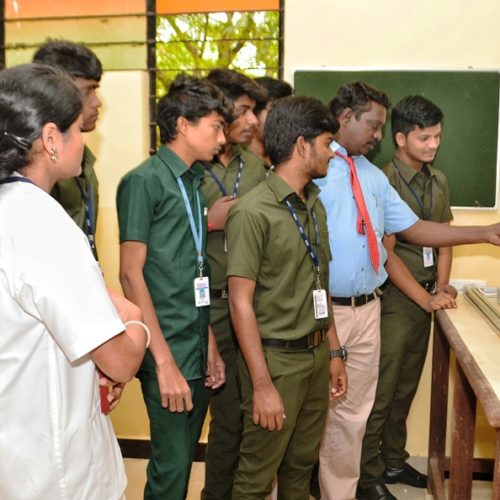
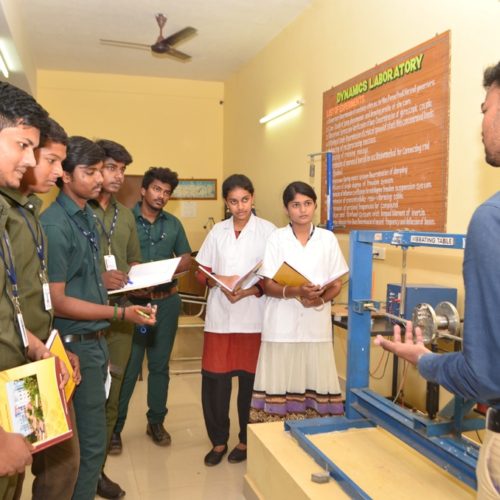
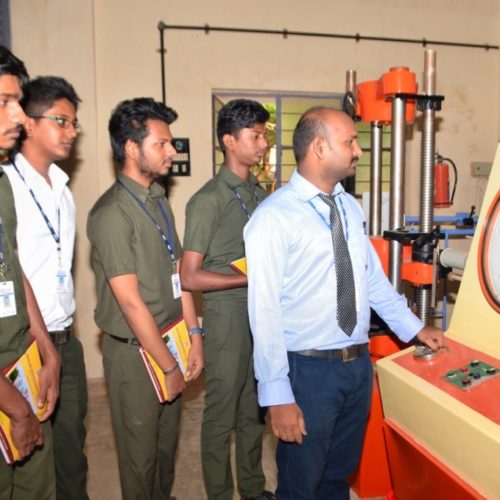
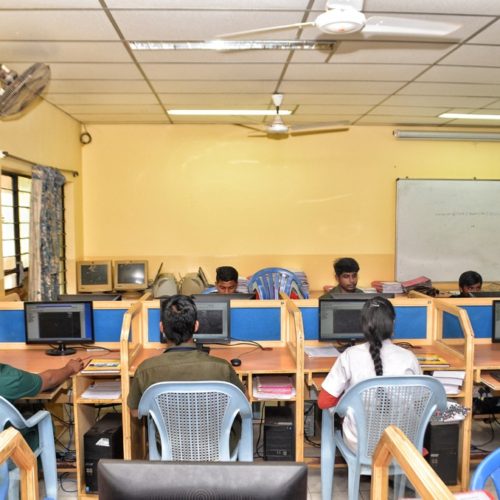
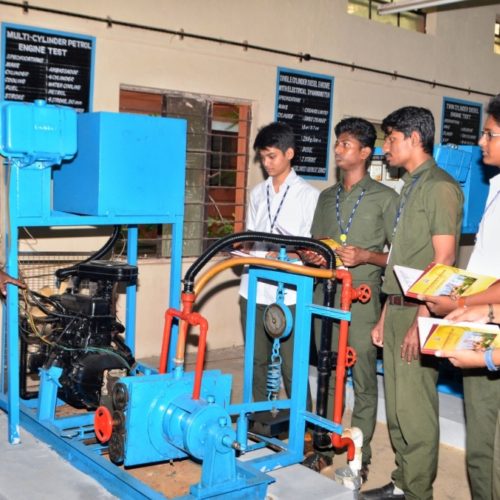
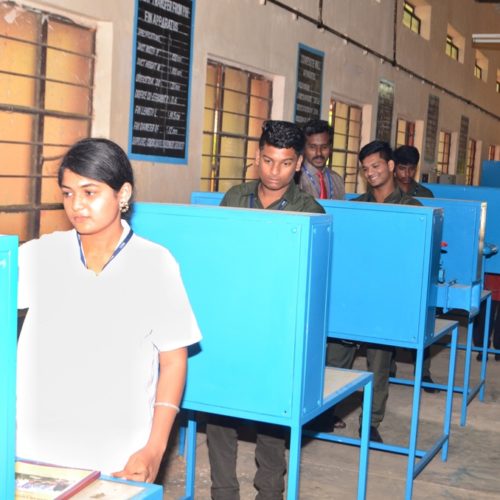
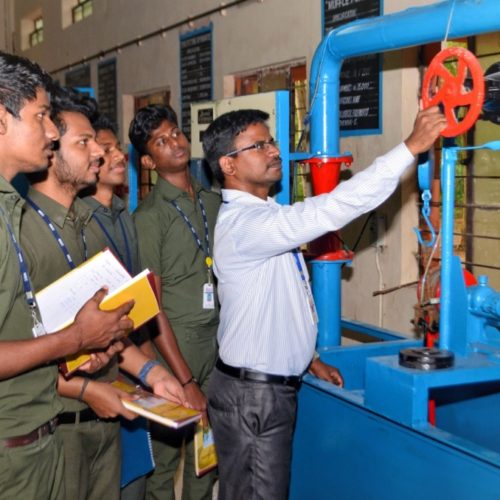
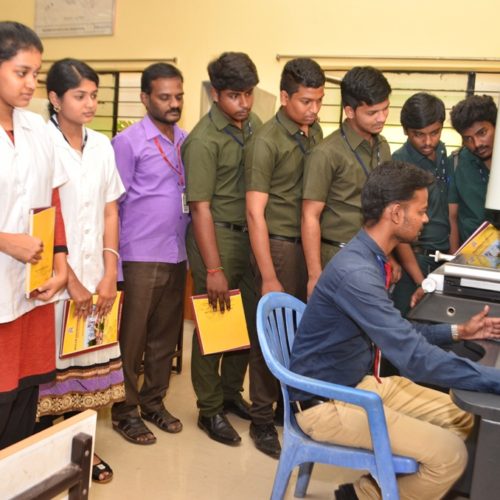

Mailam Engineering College is a self-financing institution that was established in 1998 in Villupuram district. The college is approved by AICTE, New Delhi and affiliated to the Anna University, Chennai. It offers eight undergraduate courses and six postgraduate courses.
Under Graduate Programs:
Post Graduate Programs:
Copyright © 2024. All rights reserved.
WhatsApp us